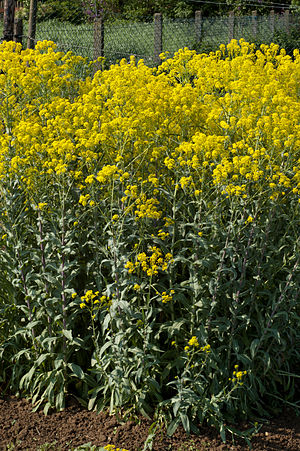Botanical Name : Viola tricolor
Family: Violaceae
Genus: Viola
Species: V. tricolor
Kingdom: Plantae
Order: Malpighiales
Common Names: Heartsease, Heart’s ease, Heart’s delight, Tickle-my-fancy,Johnny Jump Up, Jack-jump-up-and-kiss-me, Come-and-cuddle-me, Three faces in a hood, or Love-in-idleness
Habitat :Native to Europe, including Britain, from Scandanavia south and east to Corsica, W. Asia, Siberia, Caucasus.Cultivated and waste ground, short grassland etc, mainly on acid and neutral soils.
Description:
Viola tricolor is a small annual/perennial plant of creeping and ramping habit, reaching at most 15 cm in height, with flowers about 1.5 cm in diameter.
It is hardy to zone 4 and is not frost tender. It flowers from April to September. The flowers can be purple, blue, yellow or white. They are hermaphrodite and self-fertile, pollinated by bees. The seeds ripen from Jun to September
click to see the pictures..>…..(01)...(1)…...(2)..…….(3)..……….(4).....
It is noted for attracting wildlife.
Suitable for: light (sandy), medium (loamy) and heavy (clay) soils and prefers well-drained soil. Suitable pH: acid and neutral soils. It can grow in semi-shade (light woodland) or no shade. It prefers moist soil.
Cultivation:
Prefers a cool moist well-drained humus-rich soil in partial or dappled shade and protection from scorching winds. Tolerates sandstone and limestone soils but becomes chlorotic if the pH is too high. Prefers a pH between 6 and 6.5. A very variable species. It is normally an annual plant, but it is sometimes a short-lived perennial. A good bee plant. Grows well with rye but dislikes growing with wheat. All members of this genus have more or less edible leaves and flower buds, though those species with yellow flowers can cause diarrhoea if eaten in large quantities.
Propagation:
Seed – best sown in the autumn in a cold frame. Division in the autumn or just after flowering. The plant is a short-lived perennial and division is not that worthwhile.
Chemical Constituents:
ChemicalsV. tricolor is one of many viola plant species containing cyclotides. These small peptides have proven to be useful in drug development due to their size and structure giving rise to high stability. Many cyclotides, found in Viola tricolor are cytotoxic. This feature means that it could be used to treat cancers.
#Extracts from the plant are anti-microbial.
#V. tricolor extract had anti-inflammatory effect in acute inflammation induced in male Wistar rats.
#The plant, especially the flowers, contain antioxidants and are edible.
#Plants contain aglycones: apigenin, chrysoeriol, isorhamnetin, kaempferol, luteolin, quercetin. and rutin
The fresh plant Viola declinata and V. tricolor contain approximately
*saponins (4.40%),
*mucilages (10.26%),
*total carotenoids(8.45 mg/100g vegetal product, expressed in ?-carotene).
Edible Uses:
Edible Parts: Flowers; Leaves.
Edible Uses: Tea.
Young leaves and flower buds – raw or cooked. When added to soup they thicken it in much the same way as okra. A tea can be made from the leaves. The small attractive flowers are added to salads or used as a garnish.
Medicinal Uses:
Anodyne; Antiasthmatic; Antiinflammatory; Antispasmodic; Cardiac; Demulcent; Depurative; Diaphoretic; Diuretic; Emetic; Emollient;
Expectorant; Homeopathy; Laxative; Vulnerary.
Heartsease has a long history of herbal use and was at one time in high repute as a treatment for epilepsy, asthma, skin diseases and a wide range of other complaints. In modern herbalism it is seen as a purifying herb and is taken internally in the treatment of skin complaints such as eczema. The herb is anodyne, antiasthmatic, anti-inflammatory, cardiac, demulcent, depurative, diaphoretic, diuretic, emollient, expectorant, laxative and vulnerary. Being expectorant, it is used in the treatment of various chest complaints such as bronchitis and whooping cough, whilst its diuretic action makes it useful for treating rheumatism, cystitis and difficulty in passing urine. It is also used as an ointment for treating eczema and other skin complaints and is also useful in cases of rheumatism, bed-wetting etc. The plant is harvested from June to August and dried for later use. The root is emetic. A homeopathic remedy is made from the entire plant. It is used in the treatment of cutaneous eruptions.
It is commonly used in an infusion as a treatment for skin eruptions in children, fevers, hypertension, anxiety and nervousness, dry throat, cough, and diarrhea and urinary inflammations. It may be used in eczema and other skin problems where there is exudates (weeping) eczema. As an anti-inflammatory expectorant it is used for whooping cough and acute bronchitis where it will soothe and help the body heal itself. For urinary problems it will aid in the healing of cystitis and can be used to treat the symptoms of frequent and painful urination.
Other Uses :
Dye; Litmus.
Yellow, green and blue-green dyes are obtained from the flowers. The leaves can be used in place of litmus in testing for acids and alkalis.
Disclaimer : The information presented herein is intended for educational purposes only. Individual results may vary, and before using any supplements, it is always advisable to consult with your own health care provider
Resources:
http://en.wikipedia.org/wiki/Viola_tricolor
http://www.pfaf.org/user/Plant.aspx?LatinName=Viola+tricolor
http://www.herbnet.com/Herb%20Uses_IJK.htm




























